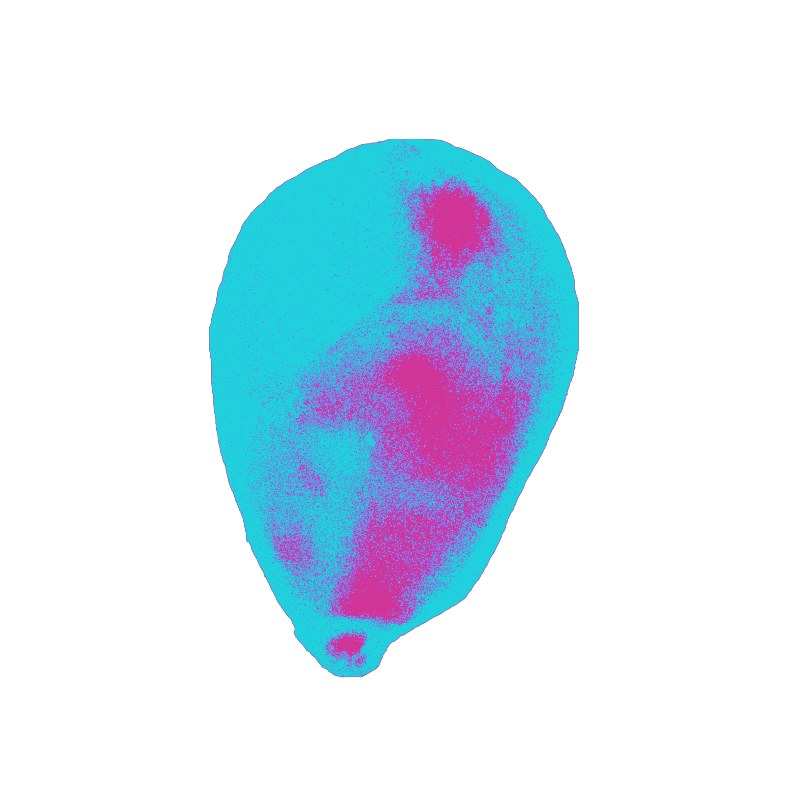One could argue that popcorn is a perfect food.
Popcorn exists to lift you up, to make mundane moments a bit more magical, to transport you through the rote act of lifting a kernel from bowl to mouth over and over again. That is because it has the ability to transform into whatever you need it to be. Want comfort food? Perhaps popcorn with a sweet and salty blend or parmesan rosemary. Want to stress eat but don’t want to feel like a lead balloon because of it? Try popcorn with nutritional yeast; all cheesy desire, none of the bloat. Want dinner but have no other food and cannot bring yourself to order delivery again? A double batch of popcorn with a more savory blend such as za’atar or bbq will do the trick. Want a cozy night for two that makes staying home feel special and purposeful, instead of dull and uninspired? Popcorn with— might I suggest— truffle salt and a nice Cotes du Rhone?
I have been passionate about popcorn for as long as I can remember. My dedication began to solidify when my mother, due to a "diet," began making popcorn on the stove-top every night after dinner. Upon reflection, this was likely because she was still hungry after eating a prescribed dinner of broccoli with lemon. I always had my own bowl. This is an at-times-inconvenient tradition that carries through today. I will always make enough popcorn for an army; I give each person their own bowl. But do not try to share mine, please.
It should be noted that all of my preferences and recommendations are predicated upon a desire to eat the most amount of popcorn, as frequently as possible. For this reason, I rarely use butter. I do not spray on additional oil after popping to assist with seasoning adhesion. I also do not use artificial seasonings, delicious though they are. There is nothing wrong with employing any of these methods! You can make your popcorn as buttery and coated with as much delicious, bright orange, fake cheese as your heart desires! If you do go that route, consider King Arthur, everything they do is great. As a 30-something with a slowing metabolism, I opt for cleaner popcorn at a (much) higher quantity. This is merely a preference, and I encourage you to experiment with the full spectrum of popcorn decadence.

Choosing your oil
Many people put a lot of stock into smoke points when choosing an oil. I find that with a good non-stick pot and medium high heat, I can prioritize flavor over smoke points with little issue. I regularly make popcorn with coconut oil (smoke point 350F) and olive oil (smoke point 325-375F). But if smoke points are a concern for you, might I recommend safflower or refined avocado oil (smoke points 500F+).
Favorite oils to use in stove-top popcorn, ranked in order:
❶ Olive
❷ Coconut
❸ Safflower


Choosing your seasoning
As mentioned, I err on the side of “healthy” as I am a bit of a purist. When I don’t opt for straight-up olive oil and good salt, I tend to stick to just one or two seasonings.
Favorite seasonings, ranked:
❶ Truffle salt: Basic? Perhaps. Some might say trashy? Fine. Delicious? Always.
❷ Nutritional yeast: My go-to, it pairs well with other seasonings, and when used with coconut oil it creates a lovely and delicate cheesy/salty/sweet combo.
❸ Za'atar: A great standard, which recently paired with Avocado oil became a new favorite combo.
*add sweet or smoked paprika to any of these for an additional flavor boost

How to make stovetop popcorn
❶ Add a small amount of oil to a non-stick pot, 6 quarts or larger. You want just enough oil to cover the bottom of the pot once it’s been swirled around (approximately 1 tbsp).
❷ Add 5 kernels to the pot and turn heat to high; cover pot with a lid (preferably glass).
❸ Listen attentively for the kernels to pop, count each until all 5 have popped (hence the preference for a glass lid- you can see that the kernels have popped).
❹ Add ½ cup of kernels (more or less depending on desired amount). ½ cup will provide a full, 12 inch bowl’s worth of popcorn.
❺ Lightly swirl oil and kernels around to help coat kernels with oil prior to popping.
❻ Wait. Listen.
Wait. Listen. Wait. Listen.

❼ When roughly half the kernels have popped, shake the pot. Using potholders, hold the side handles of the pot with the lid on and gently shake the pot up and down. This will keep kernels from sticking to the bottom of the pot and burning. Lightly shake the pot sporadically while kernels are actively popping.
❽ When popping slows, begin shaking lightly every few seconds until the kernels stop popping.
❾ Pull the pot off the stove when 5+ seconds pass with no popping. Either season or pour into a bowl immediately.

Seasoning: two ways
❶ Add seasoning in small batches directly to the pot and shake to coat popcorn evenly.
❷ Pour popcorn into a bowl and add seasoning in small batches, toss to coat.
A Note About Kernels
There is a lot of information out there about kernels: size, quality, heirloom status. I’m here to tell you that large butterfly kernels are simply the best, no matter the color. When you want a perfect balance of fluff and texture, the best surface area to hold seasoning, and top poppability, bigger is better. I’m not sure how the tiny popcorn trend got started, but I’m not here for it. There are also mushroom kernels, which work better for heavier coatings such as syrups and heavy oils, none of which I enjoy or recommend.
You probably want to pour yourself a glass of wine to celebrate your ingenious and successful stove-top popcorn creation. Unsure what might pair well? Fear not! ALL wine pairs well with popcorn, but there are a few I highly recommend:
❶ Donkey & Goat 2020 TWINKLE MOURVÈDRE

Because there are so many right ways to make delicious popcorn, I invited a fellow popcorn-enthusiast, Jeremiah Shalo, to weigh in on some hot topics and personal preferences:
What popping method are you currently using?
JS: It really depends, lately I’ve been putting kernels in my silicone microwave-safe bowl and popping it in the microwave on account of laziness
Popcorn: Meal? Snack? Both? Neither?
JS: BOTH!!!
Do you ever indulge in store-bought popcorn? Which kind?
JS: Oh my god Trader Joe’s Heirloom Popcorn with avocado oil and pink salt is TO DIE FOR.
*note, this item seems to be discontinued
Hot take: microwave popcorn? (you know the kind)
JS: Heh, rarely, but Pop Secret with light butter when in a pinch but I def prefer homemade.
Hot take: movie theatre popcorn?
Ehhhhhh definitely liked it as a kid but now after seeing the chemicals and liquid oil put on it really turns me off.
Do you have any popcorn hacks?
JS: If you’re working on your computer and want it as a snack but don’t want to get oils or seasoning all over your keyboard then just pop them suckers in a cereal or mixing bowl and grab a good ol’ spoon to scoop your popcorn delight mess-free.
What makes popcorn special to you?
JS: It reminds me of my dad making it on the stove in a pot when I was growing up and he would always make my sister and me our own bowls which made it feel so special. Also, I am a fanatic of flavor-filled light snacking and popcorn is one that I can eat daily with no remorse (not that I would openly admit to eating daily).
Jeremiah’s Picks:
- Preferred kernel choice:
Large butterfly and blue butterfly
- Top 3 popcorn seasonings:
Parmesan rosemary
Sriracha butter
Cinnamon sugar
- Preferred oil:
Avocado oil
Olive oil (as a backup)
Microwave air popper vs. stovetop
Using a silicone microwave air popping bowl such as the one that Jeremiah mentioned is a wonderful alternative for someone who wants fast and easy popcorn without the chemicals and grease of packaged popcorn. You will definitely miss the flavor of the oil you get with stove-top. If you are seasoning with anything more than a light powder, you may have trouble with seasoning adhesion, in which case you can always use an oil sprayer to coat the popcorn. Keep in mind that your oil distribution will be a bit different than what you would achieve with the stove-top method, and I highly recommend warming the oil before spraying.
For Sriracha Butter Popcorn:
Make 8-10 cups of popped popcorn
Melt 2 tablespoons of butter in the microwave or on the stove.
Mix 2 teaspoons of sriracha into the melted butter
Working in batches, drizzle the melted butter over the popcorn, roughly ½ tablespoon at a time, tossing to coat in between drizzles.


Popcorn is cheap. Popcorn is easy. You can make it as simple or as fanciful as you want. You can eat popcorn mindlessly or you can savor every last kernel. You can eat a handful or a whole bowl. You can project your desires onto it. While I absolutely believe that popcorn is a delightful and satisfying fluffy morsel in and of itself, it can also be a vehicle for your wildest flavor cravings. This little seed can be whatever you need it to be. A simple seasoned bowl is only the beginning.



